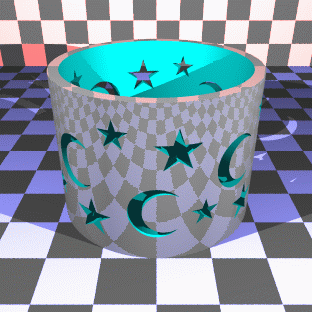
Advanced Graphics
2003-04
Principal lecturer: Dr Neil Dodgson
Taken by: Part II
Note: the section of the course on radiosity is not examinable this year.
Handouts
Exercises and exam questions
There are two sets of exercises. You should
expect to have two supervisions, one on each set of exercises.
- Exercise set 1 for the first supervision, covering material from the first five lectures.
- Exercise set 2 for the second supervision, covering material from the last three lectures.
Past exam questions are in two places: Advanced Graphics
(98, 99, 02, 03) and Advanced
Graphics and HCI (00, 01).
A starter exercise: Write a simple ray
tracer. To make it as simple as possible, you could limit it to the
following features: (1) only one type of primitive object: the
sphere; (2) only one type of light source: either point lights or
directional lights (which are roughly the same as point lights at
infinity); and (3) only specular, diffuse and ambient lighting (using
the model taught in Part IB). If you then want to extend it
to do more interesting things, consider adding extra primitive
objects, perfect mirror reflection, transparency and refraction. Beyond this you could experiment with texture mapping and bump mapping.
Useful web sites
General
Ray tracing
Beziers, B-splines and NURBS
Implicits and CSG
Subdivision
- The subdivision.org
website which compliments the book "Subdivision Methods For Geometric
Design: A Constructive Approach" by Joe Warren and Henrik Weimer. It
has a short tutorial on subdivision and Java applets illustrating both
curve and surface subdivision.
Radiosity
Note: the section of the course on radiosity is not examinable this year.
|
